// NVIDIA GeForce GTX 560 Ti is now considered a mature video card design now, in anticipation of the release of future GPUs in the near future. Palit, like other manufacturers, did not miss the opportunity and take advantage of the pre-holiday boom by releasing a new GTX 560 Ti, called GTX 560 Ti Twin Light Turbo. // The naming scheme already describes the main...
March 19, 2011// GeForce NVIDIA 500 is ruthlessly, deeper and deeper, plunging into the key area of the market - the mainstream, where the most money is made, with the GeForce GTX 550 Ti being reviewed today. GeForce video card The GTX 560 Ti launched last month was hailed as a "sweet deal for gamers" in the $200~$250 price range, and now the GTX 550 Ti has come to take over...

// One of the most remarkable features MSI boards XPower is the presence of six video card slots. However, it is not only this function that makes it an interesting product. She can also boast big amount various functions and supports a range of interesting technologies, which we are going to discuss in detail in our today...
February 23, 2011// The humble power supply is perhaps one of the most underrated components of any computer. Part of the problem is that if your computer becomes unstable or smokes due to a poor quality or weak power supply, you'll probably only then bother to think about buying a better model. // We decided to focus...
February 16, 2011// Last October, AMD released the second generation Radeon HD 6800 DirectX 11 architecture, codenamed Northern Islands. The time spent between the releases of HD 5000 and HD 6000 was used to refine and adjust its architecture. The MSI Radeon HD 6870 HAWK card comes with a lot of additional functions such as support...
February 7, 2011// Ti or Titanium, is a chemical element with the symbol Ti and atomic number 22. It is a very strong and corrosion-resistant element, which is why it is used in the construction of high-speed aircraft and spacecraft, and is even used as the name GeForce Ti for video cards. We've already heard about Titanium using the GeForce 4 series as an example...
February 4, 2011// Raidmax cases need no introduction as they are well known for their futuristic designs for gaming computer. With the release of the Blackstorm case, Raidmax continues to innovate with unique cooling solutions, as well as interesting color and design types. Raidmax has entered the large gaming PC case market...
" " What is the difference TFT screen from IPS?
What is the difference between a TFT screen and an IPS screen?
As happens with concepts and other abbreviations that denote various specifications, confusion also occurs with the concepts of TFT and IPS. Incorrect interpretation of these concepts occurs, as a rule, due to unqualified descriptions in electronics catalogs.
The IPS matrix is, in fact, the same TFT, namely, a type of TFT made using a special technology - TN-TFT. Let's take a closer look at the features of TFT and IPS.
TFT (TN) is a technology for producing an LCD screen matrix (thin film transistor screen), when liquid crystals are placed in a spiral between two plates and, in the absence of voltage, rotate at right angles to each other in the horizontal plane. At maximum voltage, the crystals change position so that when light passes through them, black pixels are formed (and white pixels when there is no voltage).
IPS technology is the technology for manufacturing a matrix based on TFT, when the crystals are arranged not in a spiral, but parallel to a single plane of the screen and parallel to each other. In addition, unlike TFT, in IPS screens the crystals do not rotate when there is no voltage.

Visually, the difference between the IPS screen and its TN-TFT counterpart is the greater contrast due to the almost perfect transmission of black. The image on the IPS screen looks sharper. In turn, the color rendering quality of TN-TFT cannot be called good. In this case, each pixel usually has its own hue, different from other pixels, which causes color distortion.
But TN-TFT matrices have better response speed, and better than all other matrices, not only IPS. IPS screens require time to rotate the entire array of parallel crystals. At the same time, for the human eye the difference in response time is invisible.
Displays built using IPS technology are also more energy-intensive than TN-TFT. This is due to the energy consumption of turning the crystals. Thus, when a manufacturer sets itself the task of making a device, first of all, energy efficient, it uses, as a rule, TN-TFT.
However, again, IPS matrices are characterized by wider viewing angles - 178 degrees in both planes.
Finally, another significant difference between TN-TFT and IPS technologies is the cost of matrices based on them. The TN-TFT matrix is the cheapest matrix, and it is used exclusively in budget electronics. IPS screens are a higher level, which, however, is not top-end.
Modern mobile technology uses a wide variety of display types. However, the most commonly used technologies today are TFT and IPS. How are they different, what are the strengths and weaknesses of both types? Let's try to figure it out.
To begin with, what is TFT technology and what is IPS technology? The abbreviation TFT stands for display technology using thin film transistors. These transistors are used as a control element in several types of displays, including TN and organic AMOLED.
IPS (In-Plane Switching) technology arose as a development of TN LCD technology and was intended to correct some of its shortcomings (poor color rendition, limited viewing angles). By the end of the nineties, IPS displays seriously surpassed traditional TN displays in this indicator.
Here the first surprise awaits us: if you think about it, IPS is also TFT, only slightly improved. However, as a rule, by TFT we usually mean TN-TFT technology, but this is already a reason for comparisons.
If we compare modern TN and IPS matrices, we can briefly summarize the advantages of both technologies.
Why IPS is better than TN-TFT
- Improved color rendering. This is especially true for black color: in TN-TFT, due to the spiral arrangement of microcrystals, they cannot be completely drowned out, so only dark gray can be achieved. IPS displays show black color adequately.
- Viewing angles. Even if you look at the IPS display from an acute angle from the side, the colors on it will not be distorted.
- Increased power of devices with IPS. This has nothing to do with the merits of the technology itself. It’s just that in devices that install relatively expensive IPS displays, it makes sense to install other components that are more expensive. High Quality and power.
Why TN-TFT is better than IPS
- Price. The technology for producing TN displays is quite cheap, so TN matrices do not make devices too expensive.
- Response speed. One of the main problems with IPS displays has always been slow response. Now the developers have achieved acceptable values, but regular TN is still superior to IPS.
- Reduced energy consumption. Advantages IPS requires much more power than modest TN-TFT screens.

It is important to note that not all devices have TFT screens that compete with IPS. For example, in tablets that are positioned as readers, the competitor is an e-ink display. And if you value your eyes, you shouldn’t mess with TFT at all. At the same time, on regular phones or inexpensive smartphones, from which you are not going to read books or use the Internet for a long time, TFT screens are quite acceptable.
Before the mass distribution of smartphones, when buying phones, we evaluated them mainly by design and only occasionally paid attention to functionality. Times have changed: now all smartphones have approximately the same capabilities, and when looking only at the front panel, one gadget can hardly be distinguished from another. Came to the fore specifications devices, and the most important among them for many is the screen. We will tell you what lies behind the terms TFT, TN, IPS, PLS, and help you choose a smartphone with the desired screen characteristics.
Types of matrices
IN modern smartphones Three matrix production technologies are mainly used: two are based on liquid crystals - TN+film and IPS, and the third - AMOLED - on organic light-emitting diodes. But before we begin, it’s worth talking about the acronym TFT, which is the source of many misconceptions. TFT (thin-film transistor) are thin-film transistors that are used to control the operation of each subpixel of modern screens. TFT technology is used in all of the types of screens listed above, including AMOLED, therefore, if somewhere they talk about comparing TFT and IPS, then this is a fundamentally incorrect formulation of the question.
Most TFTs use amorphous silicon, but recently polycrystalline silicon TFTs (LTPS-TFTs) have been introduced into production. The main advantages of the new technology are reduction in power consumption and transistor sizes, which allows achieving high pixel densities (more than 500 ppi). One of the first smartphones with an IPS display and LTPS-TFT matrix was OnePlus One.

OnePlus One smartphone
Now that we have dealt with TFT, let's move directly to the types of matrices. Despite the wide variety of LCD varieties, they all have the same basic operating principle: the current applied to the liquid crystal molecules sets the polarization angle of the light (it affects the brightness of the subpixel). The polarized light then passes through the filter and is colored to match the color of the corresponding subpixel. The first to appear in smartphones were the simplest and cheapest TN+film matrices, the name of which is often abbreviated to TN. They have small viewing angles (no more than 60 degrees when deviating from the vertical), and even with slight tilts the image on screens with such matrices is inverted. Other disadvantages of TN matrices include low contrast and low color accuracy. Today, such screens are used only in the cheapest smartphones, and the vast majority of new gadgets already have more advanced displays.
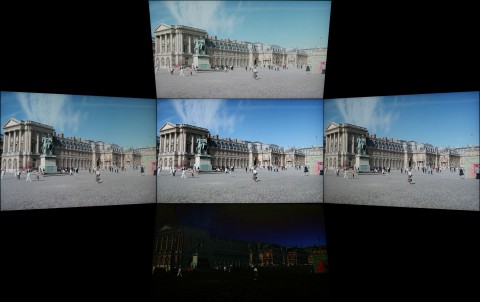
The most common technology in mobile gadgets now is IPS technology, sometimes referred to as SFT. IPS matrices appeared 20 years ago and since then have been produced in various modifications, the number of which is approaching two dozen. However, it is worth highlighting among them those that are the most technologically advanced and are actively used in this moment: AH-IPS from LG and PLS from Samsung, which are very similar in their properties, which was even the reason for litigation between the manufacturers. Modern modifications of IPS have wide viewing angles that are close to 180 degrees, realistic color reproduction and provide the ability to create displays with high pixel density. Unfortunately, gadget manufacturers almost never report the exact type of IPS matrix, although when using a smartphone, the differences will be visible to the naked eye. Cheaper IPS matrices are characterized by fading of the image when the screen is tilted, as well as low color accuracy: the image can be either too “acidic” or, on the contrary, “faded”.
As for energy consumption, in liquid crystal displays it is mostly determined by the power of the backlight elements (in smartphones LEDs are used for these purposes), so the consumption of TN+film and IPS matrices can be considered approximately the same at the same brightness level.

Matrixes created on the basis of organic light-emitting diodes (OLED) are completely different from LCDs. In them, the light source is the subpixels themselves, which are subminiature organic light-emitting diodes. Since there is no need for external backlighting, such screens can be made thinner than LCD ones. Smartphones use a type of OLED technology - AMOLED, which uses an active TFT matrix to control subpixels. This is what allows AMOLED to display colors, whereas regular OLED panels can only be monochrome. AMOLED matrices provide the deepest blacks, since to “display” them you only need to turn off the LEDs completely. Compared to LCDs, such matrices have lower power consumption, especially when using dark themes, in which the black areas of the screen do not consume energy at all. Another characteristic feature of AMOLED is that colors are too saturated. At the dawn of their appearance, such matrices really had implausible color rendering, and although such “childhood sores” are long in the past, most smartphones with such screens still have a built-in saturation adjustment, which allows the image on AMOLED to be closer in perception to IPS screens.

Another limitation of AMOLED screens used to be the uneven lifespan of LEDs of different colors. After a couple of years of using the smartphone, this could lead to subpixel burnout and residual images of some interface elements, primarily in the notification panel. But, as in the case of color rendering, this problem is a thing of the past, and modern organic LEDs are designed for at least three years of continuous operation.
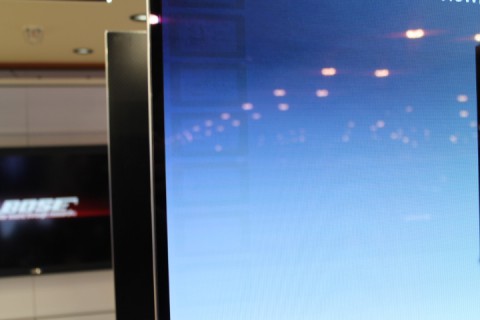
Let's sum it up summary. The highest quality and brightest images at the moment are provided by AMOLED matrices: even Apple, according to rumors, will use such displays in one of the next iPhones. But it’s worth considering that Samsung, as the main manufacturer of such panels, keeps all the latest developments for itself, and sells “last year’s” matrices to other manufacturers. Therefore, when choosing a non-Samsung smartphone, you should look towards high-quality IPS screens. But under no circumstances should you choose gadgets with TN+film displays - today this technology is already considered outdated.
The perception of the image on the screen can be influenced not only by the matrix technology, but also by the pattern of subpixels. However, with LCDs everything is quite simple: each RGB pixel in them consists of three elongated subpixels, which, depending on the modification of the technology, can be shaped like a rectangle or a “tick”.

Everything is more interesting in AMOLED screens. Since in such matrices the light sources are the subpixels themselves, and the human eye is more sensitive to pure green light than to pure red or blue, using the same pattern in AMOLED as in IPS would degrade color reproduction and make the picture unrealistic. An attempt to solve this problem was the first version of PenTile technology, which used two types of pixels: RG (red-green) and BG (blue-green), consisting of two subpixels of corresponding colors. Moreover, if the red and blue subpixels had a shape close to squares, then the green ones looked more like highly elongated rectangles. The disadvantages of this design were the “dirty” white color, jagged edges at the junction of different colors, and at low ppi - a clearly visible grid of subpixels, appearing due to too much distance between them. In addition, the resolution indicated in the characteristics of such devices was “dishonest”: if the IPS HD matrix has 2,764,800 subpixels, then the AMOLED HD matrix has only 1,843,200, which led to a difference in the clarity of IPS and AMOLED matrices visible to the naked eye. seemingly the same pixel density. The last flagship smartphone with such an AMOLED matrix was Samsung Galaxy S III.
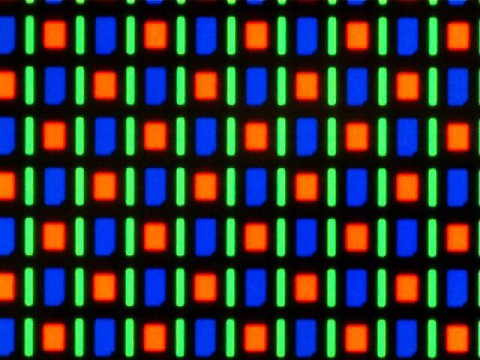
On a smartpad Galaxy Note II, the South Korean company made an attempt to abandon PenTile: the device’s screen had full-fledged RBG pixels, albeit with an unusual arrangement of subpixels. However, for unclear reasons, Samsung subsequently abandoned such a design - perhaps the manufacturer was faced with the problem of further increasing ppi.
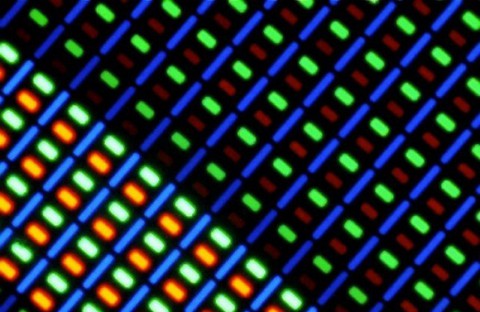
In their modern Samsung screens returned to RG-BG pixels using a new pattern type called Diamond PenTile. New technology made the white color more natural, and as for jagged edges (for example, around a white object on a black background individual red subpixels were clearly visible), this problem was solved even more simply - by increasing the ppi to such an extent that the irregularities were no longer noticeable. Diamond PenTile is used in all Samsung flagships starting with the Galaxy S4.

At the end of this section, it is worth mentioning one more pattern of AMOLED matrices - PenTile RGBW, which is obtained by adding a fourth, white, subpixel to the three main subpixels. Before the advent of Diamond PenTile, this pattern was the only recipe for pure white, but it never became widespread - one of the last mobile gadgets with PenTile RGBW became Galaxy tablet Note 10.1 2014. Nowadays AMOLED matrices with RGBW pixels are used in TVs, since they do not require a high ppi. To be fair, we also mention that RGBW pixels can also be used in LCDs, but we are not aware of examples of the use of such matrices in smartphones.
Unlike AMOLED, high-quality IPS matrices have never experienced quality problems associated with subpixel patterns. However, Diamond PenTile technology, coupled with high pixel density, has allowed AMOLED to catch up and overtake IPS. Therefore, if you choose gadgets pickily, you should not buy a smartphone with an AMOLED screen that has a pixel density of less than 300 ppi. At a higher density, no defects will be noticeable.
Design features
The variety of displays on modern mobile gadgets does not end with imaging technologies alone. One of the first things that manufacturers took on was the air gap between the projected capacitive sensor and the display itself. This is how OGS technology was born, combining the sensor and matrix into one glass package in the form of a sandwich. This gave a significant leap in image quality: the maximum brightness and viewing angles increased, and color rendition was improved. Of course, the thickness of the entire package has also been reduced, allowing for thinner smartphones. Alas, the technology also has disadvantages: now, if you break the glass, it is almost impossible to change it separately from the display. But the quality advantages turned out to be more important, and now non-OGS screens can only be found in the cheapest devices.

Experiments with glass shapes have also become popular recently. And they started not recently, but at least in 2011: HTC Sensation had a concave glass in the center, which, according to the manufacturer, was supposed to protect the screen from scratches. But not qualitatively new level Such glasses came out with the advent of “2.5D screens” with glass curved at the edges, which creates the feeling of an “infinite” screen and makes the edges of smartphones smoother. Apple actively uses such glass in its gadgets, and recently they have become more and more popular.
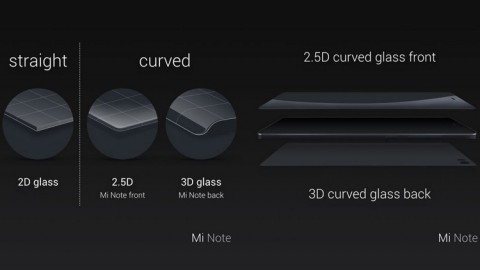
A logical step in the same direction was the bending of not only the glass, but also the display itself, which became possible when using polymer substrates instead of glass. Here the palm, of course, belongs to Samsung with its Galaxy smartphone Note Edge, in which one of the side edges of the screen was curved.

Another method was proposed by LG, which managed to bend not only the display, but also the entire smartphone along its short side. However, the LG G Flex and its successor did not gain popularity, after which the manufacturer abandoned further production of such devices.

Also, some companies are trying to improve human interaction with the screen by working on its touch part. For example, some devices are equipped with highly sensitive sensors that allow you to operate them even with gloves, while other screens receive an inductive substrate to support styluses. The first technology is actively used by Samsung and Microsoft (formerly Nokia), and the second by Samsung, Microsoft and Apple.
The future of screens
Don’t think that modern displays in smartphones have reached the highest point of their development: technology still has room to grow. One of the most promising are quantum dot displays (QLEDs). A quantum dot is a microscopic piece of semiconductor in which quantum effects begin to play a significant role. In a simplified way, the radiation process looks like this: exposure to a weak electric current causes the electrons of quantum dots to change energy, emitting light. The frequency of the emitted light depends on the size and material of the dots, making it possible to achieve almost any color in the visible range. Scientists promise that QLED matrices will have better color rendition, contrast, higher brightness and lower power consumption. Quantum dot screen technology is partially used in Sony TV screens, and LG and Philips have prototypes, but there is no talk of mass use of such displays in TVs or smartphones yet.
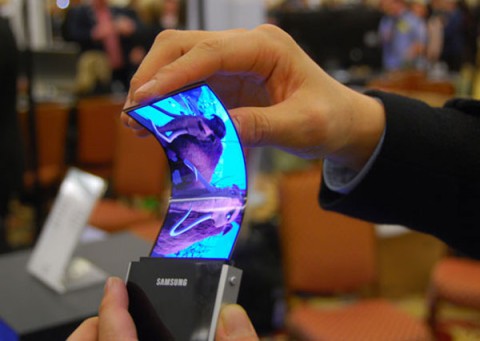
It is also highly likely that in the near future we will see not just curved, but also completely flexible displays in smartphones. Moreover, prototypes of such AMOLED matrices almost ready for mass production have existed for a couple of years. The limitation is the electronics of the smartphone, which cannot yet be made flexible. On the other side, large companies may change the very concept of a smartphone by releasing something like the gadget shown in the photo below - we can only wait, because the development of technology is happening right before our eyes.
How to choose from the variety of modern smartphones what is right for you? Today the bad-android team has prepared material with useful tips on the topic of display selection.
How not to overpay for a device? How can you figure out what to expect from it based on the type of display?
Types of matrices
Modern smartphones use three basic types of matrices.
The first of them, called - is based on organic light-emitting diodes. The remaining two types are based on liquid crystals - IPS And TN+film.
It is impossible not to mention the frequently encountered abbreviation TFT.
TFT- these are thin-film transistors that control subpixels of displays (subpixels are responsible for the three primary colors, on the basis of which “full” “multicolor” pixels are formed, which we will talk about a little later).
Technology TFT applies in all three types of matrices listed above. That is why the often used comparison TFT And IPS is essentially absurd.
For many years, the main material for TFT matrices was amorphous silicon. At the moment, an improved production of TFT matrices has been launched, in which the main material is polycrystalline silicon, significantly increasing energy efficiency. The size of the transistors has also been reduced, which allows achieving the highest performance. ppi(pixel density).
So, we’ve sorted out the matrix base, it’s time to talk directly about the data types of matrices.
At the moment, this type of matrix is the most common. Also, IPS matrices are sometimes designated by the abbreviation S.F.T..
Story IPS-matrix originates several decades ago. During this period, many different modifications and improvements were developed IPS-displays.
When listing the advantages and disadvantages of IPS, it is necessary to take into account the specific subtype. To summarize, for the list of strengths of IPS we will take the best subtype (and therefore the most expensive), and for the disadvantages we will keep in mind the cheapest subtype.
Advantages:
Excellent viewing angles (maximum 180 degrees)
High-quality color rendition
Possibility of producing high ppi displays
Good energy efficiency
Flaws:
Picture fades when the display is tilted
Possible oversaturation or, conversely, insufficient color saturation
AMOLED matrix
The matrix provides the deepest black color, compared to the other two types of matrices. But it was not always so. The first AMOLED matrices had implausible color reproduction and insufficient color depth. There was some acidity in the picture, too intense brightness.
Until now, due to internal incorrect settings, some displays are almost identical in perception to IPS. But in super-AMOLED displays, all flaws were successfully fixed.
When listing the advantages and disadvantages, let’s take a regular AMOLED matrix.
Advantages:
The highest quality picture among all existing types of matrices
Low power consumption
Flaws:
Occasionally uneven lifespan of LEDs (different colors)
The need for careful customization of the AMOLED display
Let's sum up the intermediate results. Obviously, the matrices are leaders in image quality. It is AMOLED displays that are installed on the most top-end devices. In second place are IPS matrices, but you should be careful with them: manufacturers rarely indicate the subtype of the matrix, and this is what plays a key role in the final level of the image. An unambiguous and firm “no” should be said to devices with TN+film matrices.
Subpixels
The determining factor in the final quality of the display is often hidden display characteristics. Image perception is strongly influenced by subpixels.
In case of LCD the situation is quite simple: everyone is colored ( RGB) pixel consists of three subpixels. The shape of the subpixels depends on the modification of the technology - a subpixel can be shaped like a “check mark” or a rectangle.
In the implementation of displays in terms of subpixels, everything is somewhat more complicated. In this case, the light source is the subpixels themselves. As you know, the human eye is less sensitive to blue and red colors, in contrast to green. That is why repeating the IPS subpixel pattern would significantly affect the picture quality (of course, in the worst side). To preserve the realistic color rendering, technology was invented.
The essence of the technology is to use two pairs of pixels: RG (red-green) and BG (blue-green), which, in turn, consist of corresponding subpixels of the corresponding colors. A combination of subpixel shapes is used: green ones have an elongated shape, and red and blue ones are almost square.
The technology turned out to be not very successful: the white color was frankly “dirty”, and notches appeared at the junctions of different shades. At a low rate ppi a grid of subpixels became visible. Such matrices have been installed on a number of smartphones, including flagships. The last flagship that was “lucky” to get a PenTile matrix was Samsung Galaxy S III.
Naturally, it was impossible to leave the situation with low-quality implementation of subpixels in the same state, so soon the upgrade above the described technology, which received the prefix Diamond.
By increasing ppi Diamond PenTile made it possible to get rid of the problem with jagged boundaries between colors, and white became much “cleaner” and more pleasing to the eye. And it is this development that is installed in all Samsung flagships, starting with the Galaxy S4.
And here IPS-matrices, although they are generally considered weaker than ’ov’s ones, however, have never encountered such problems.
What conclusion can be drawn? Be sure to pay attention to the quantity ppi in case of purchasing a smartphone with an -matrix. A high-quality picture is only possible with an indicator of 300 ppi. But with IPS matrices do not have such strict restrictions.
Innovative technologies
Time does not stand still; talented engineers continue to work painstakingly to improve all characteristics of smartphones, including matrices. One of the latest serious developments is technology O.G.S..
O.G.S. is an air gap between the screen itself and the projective-capacitive sensor. IN in this case the technology met expectations 100%: color rendering quality, maximum brightness and viewing angles increased.
And over the past few years O.G.S. It has become so embedded in smartphones that you won’t find the implementation of a “hamburger” display filled with an air gap except on the simplest devices.
In their search for display optimization, designers came across another interesting opportunity to improve the picture on phones. In 2011, experiments began on shape glass Perhaps the most common form of glass among the unusual ones has become 2.5D- with the help of curved edges of the glass, the edges become smoother and the screen becomes more voluminous.
Company HTC released a smartphone Sensation, the glass of which was concave in the center of the display. According to HTC engineers, this increases protection from scratches and impacts. But glass concave to the center never received widespread use.
The concept of bending the display itself, and not just the glass, as was done in . One of the side edges of the display has a curved shape.
A very interesting characteristic that you should pay attention to when buying a smartphone is sensor sensitivity. Some smartphones are equipped with a sensor with increased sensitivity, which allows you to fully use the display even with regular gloves. Also, some devices are equipped with an inductive substrate to support styluses.
So for those who like to text in the cold or use a stylus, the sensitive sensor will definitely come in handy.
Known truths
It's no secret that screen resolution also greatly affects the final level of the image. Without further comment, we present to your attention a table of correspondence between display diagonal and resolution.
Conclusion
Each matrix has its own characteristics and hidden characteristics. You should be careful with -displays, or rather, with the ppi pixel density indicator: if the value less than 300 ppi, then the picture quality will tell you frankly will disappoint.
For IPS-matrix is important subtype, and depending on the subtype, the cost of the smartphone logically increases proportionally.
Curved glass 2.5D will significantly increase the attractiveness of the picture, as will technology O.G.S..
The issue of display size is a purely individual one, but with multi-inch “shovels” a high resolution would be appropriate.
We wish you pleasant shopping, friends!
Stay tuned, more to come a lot of interesting.
It’s worth noting right away that each technology has enough fans, and therefore fierce debates on the Internet do not subside for a moment. This mainly concerns the topic “AMOLED vs IPS”, since TN matrices stand somewhat apart and do not claim the laurels of “the coolest technology”. After reading several reviews, we still formed our opinion, which we will share with you.
Comparison of IPS and TN matrices
The fact that screens created using TN technology have not disappeared from the market suggests that they are still in demand. Their main advantage is considered to be price, since the cost of TN displays is on average 20-50% lower than that of equivalent IPS devices. The second competitive advantage is called low response time: modern screens with a TN matrix have a response time of about 1 ms, while IPS monitors have a characteristic of 5 - 8 ms. However, the latter is quite sufficient for displaying movies and even 3D games with a large number of dynamic scenes, and therefore you can ignore this parameter as long as it is in the specified range.
Asus MeMO Pad ME172V tablet with TN screen
Contrary to the above, IPS screens show higher contrast, as well as picture brightness and, most importantly, excellent viewing angles. In addition, the thickness of devices with IPS matrices is slightly lower than that of TN opponents, which is sometimes important for smartphones and tablets. Another advantage is best quality images when direct sunlight hits the IPS screen, which is again important for wearable devices. Agree, constantly covering the smartphone screen with your hand in order to at least see something on the street is not very convenient, and therefore phones with TN screens are gradually fading into oblivion.
Conclusion: Screens with TN matrices are suitable for the corporate sector, as well as for monitors and tablets of not too demanding clients who do not mind saving money. For smartphone owners and those who are not strapped for cash, it is worth choosing devices equipped with IPS screens.
Comparison of AMOLED and TN
People who do not delve too deeply into screen production technology sometimes call displays with TN matrices nothing more than TFT. They ask salespeople questions like: “What better than AMOLED or TFT?”, forcing the latter to smile forcedly and explain the hardware to curious clients. We will assume that there are no such people among our readers, and therefore let’s move on to the topic of the title.
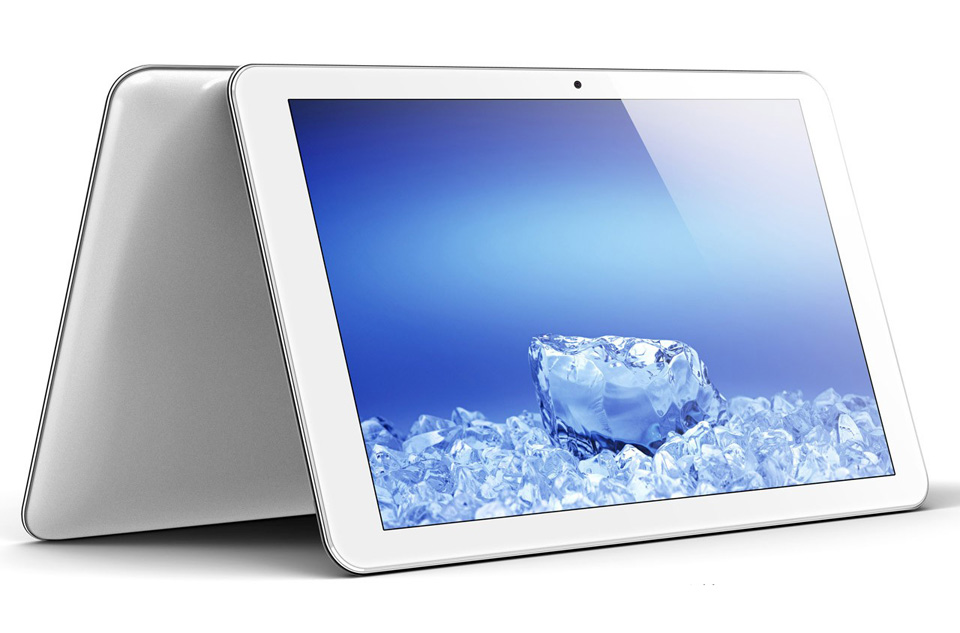
Ramos W30 tablet with ISP screen
In general, it is difficult to compare these two technologies, since devices made using them are designed for different categories of clients. AMOLED is primarily a tribute to fashion and a step towards innovation. Customers considering the purchase of equipment with an AMOLED screen count on purchasing modern device with top-end characteristics and only secondarily study the price tag and make a decision. Buyers of equipment with a TN screen, on the contrary, are looking for the most for their money, and the budget here is the primary factor when purchasing. In terms of characteristics, AMOLED is closer to IPS, and therefore appropriate conclusions for comparison arise.
Conclusion: Since AMOLED displays are even more expensive than IPS, you probably shouldn't look at them when choosing a budget or mid-budget option. If your goal is a device with high level image quality, then you are straight to the next subheading.
Comparison of AMOLED and IPS
So we get to the main question of the article: “Which is better AMOLED or IPS?” And, of course, in order to draw a conclusion, you need to consider the strengths and weaknesses of each technology.
Viewing angles. Both technologies have excellent viewing angles, and owners of smartphones and tablets vying with each other to say that their AMOLED/IPS screen is definitely better. There really are no big differences, but users and experts note that at large viewing angles, the difference between IPS and AMOLED screens manifests itself in a bluish or greenish tint to the image of the latter.
Energy saving. The point is that it needs to be said here about one feature of these two technologies. Screens with IPS matrices produce the best white color among competitors, while AMOLED displays are leaders in displaying black colors (by the way, because of this they are called even more contrasting). If an AMOLED screen often has to display white colors, for example, when using a browser, then its energy consumption increases by about 5 times.
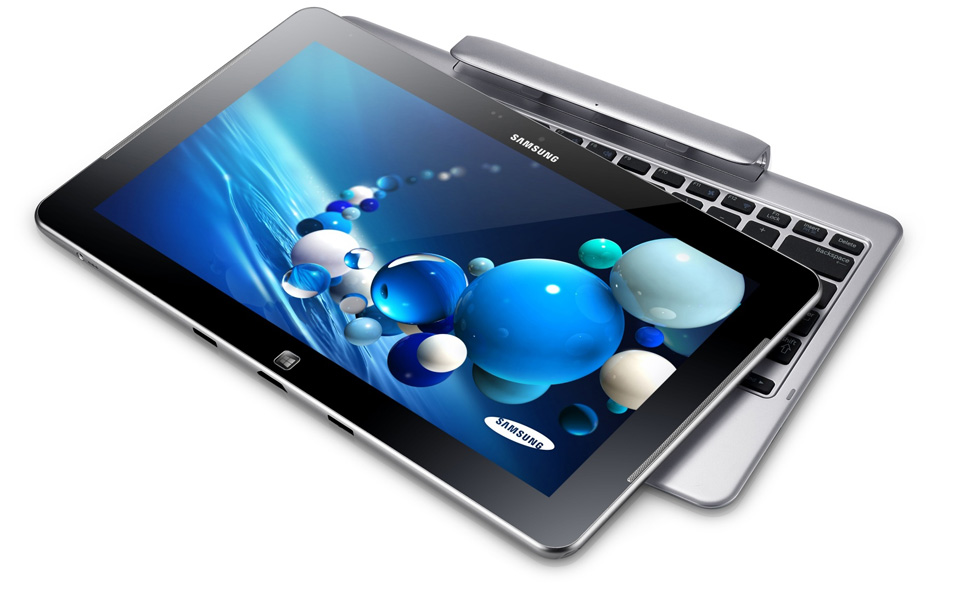
Hybrid samsung tablet ATIV Smart PC with AMOLED screen
Image clarity. Most AMOLED displays use a PenTile subpixel structure. Although the developers claim that this does not affect the image, many users, when comparing, call the picture of IPS screens clearer. On the other hand, maybe they are just suspicious?
Screen thickness. Here the advantage of AMOLED displays is undeniable. The absence of a separate backlight layer makes such screens really thinner.
Brightness and contrast. These characteristics of AMOLED screens really higher than competitors. On the other hand, many people find them oversaturated and tiring for the eyes, especially with prolonged use. It seems that this item remains a matter of taste for each individual user.
Screen burn-in. This point concerns mainly organic displays. The sad fact is that when a static picture is displayed for a long time, “traces” of it remain on the screen. For example, “images” of constantly displayed icons appear on smartphone screens.
Response time. AMOLED screens are said to have lower response times than IPS screens. In practice, this difference is insignificant and is only suitable for marketing techniques.
Conclusion: Let fans of AMOLED technology throw tomatoes at me (that is, the author), but my subjective opinion leans in favor of IPS. The technology has more advantages, but the price of the devices is still lower. We believe that organic displays will still show themselves after several years of improving the technology in all their glory, but for now, their characteristics are inferior in the price-quality category.
Thank you for your attention to our site, if you liked the published information, you can help in the development of the resource by sharing the article via social networks.
